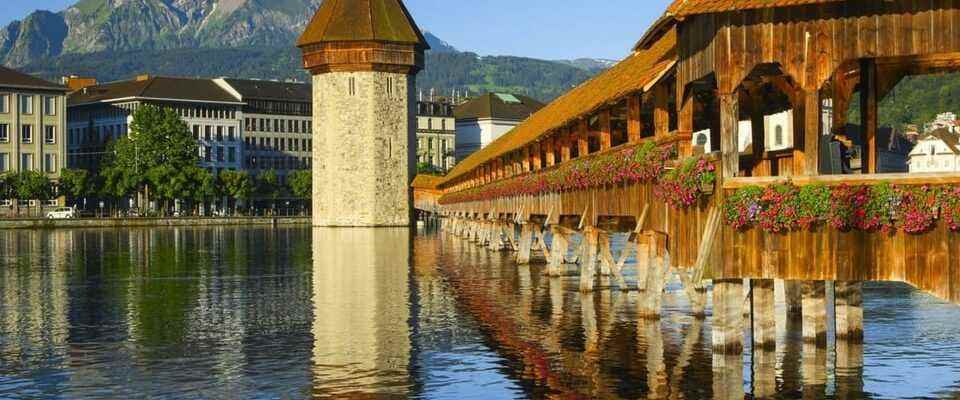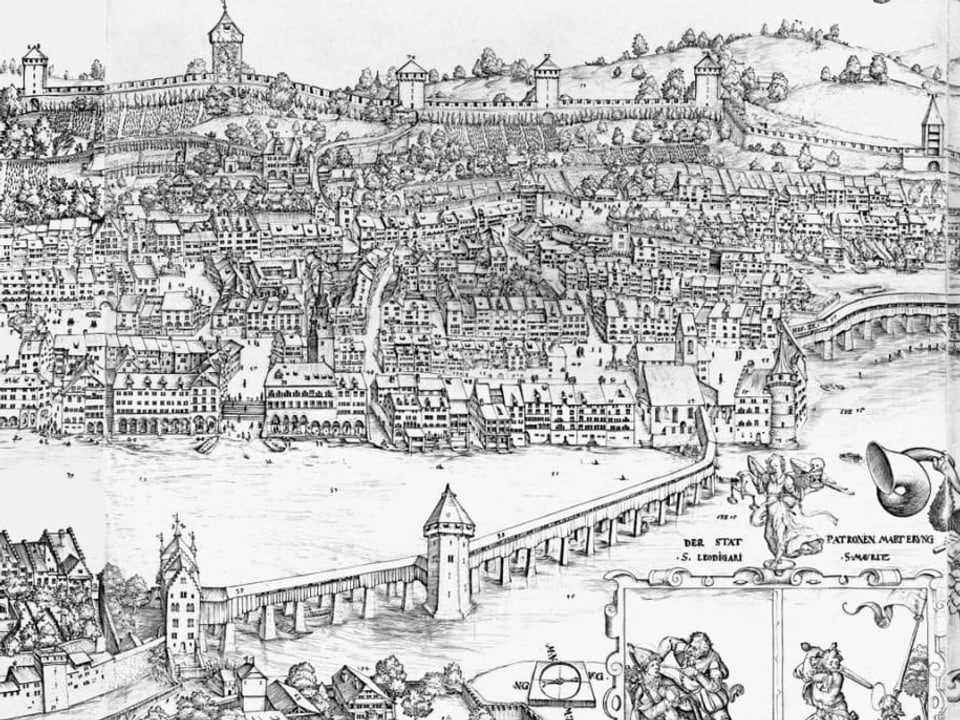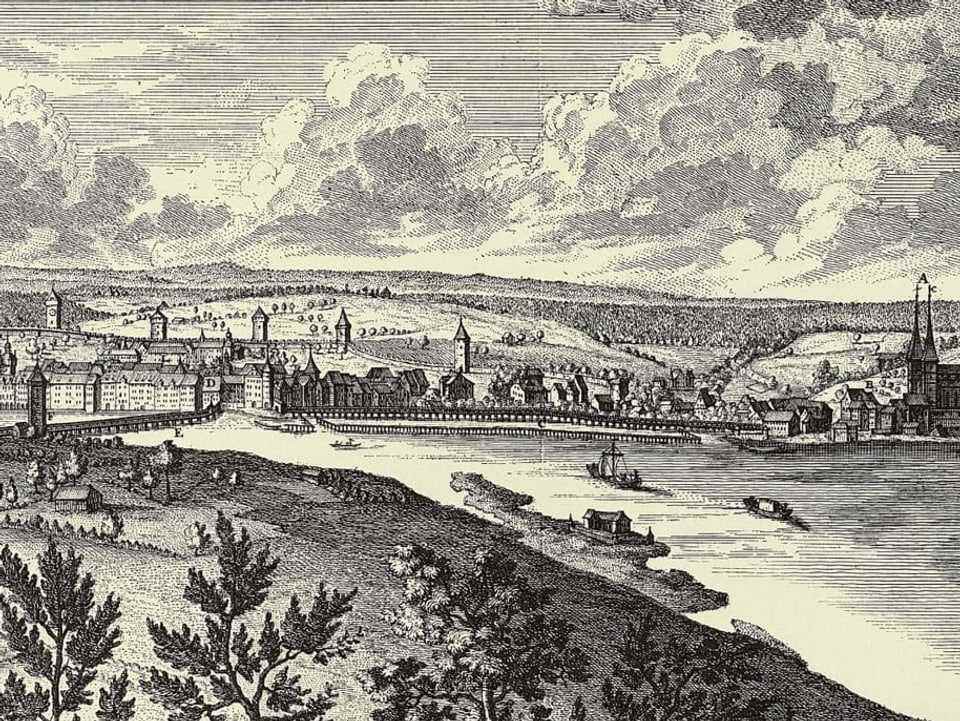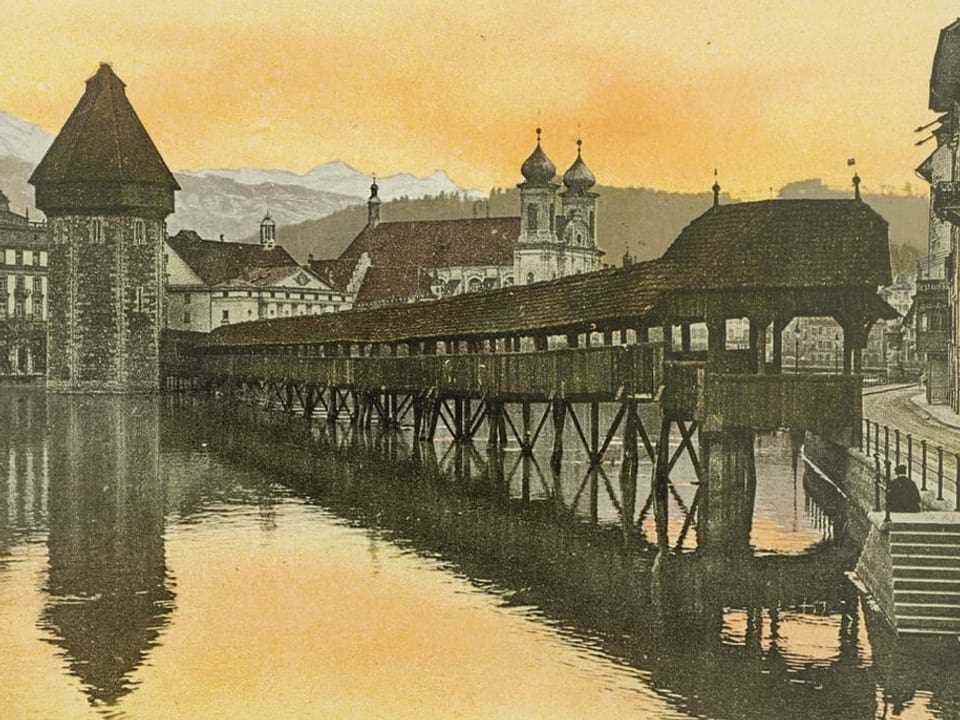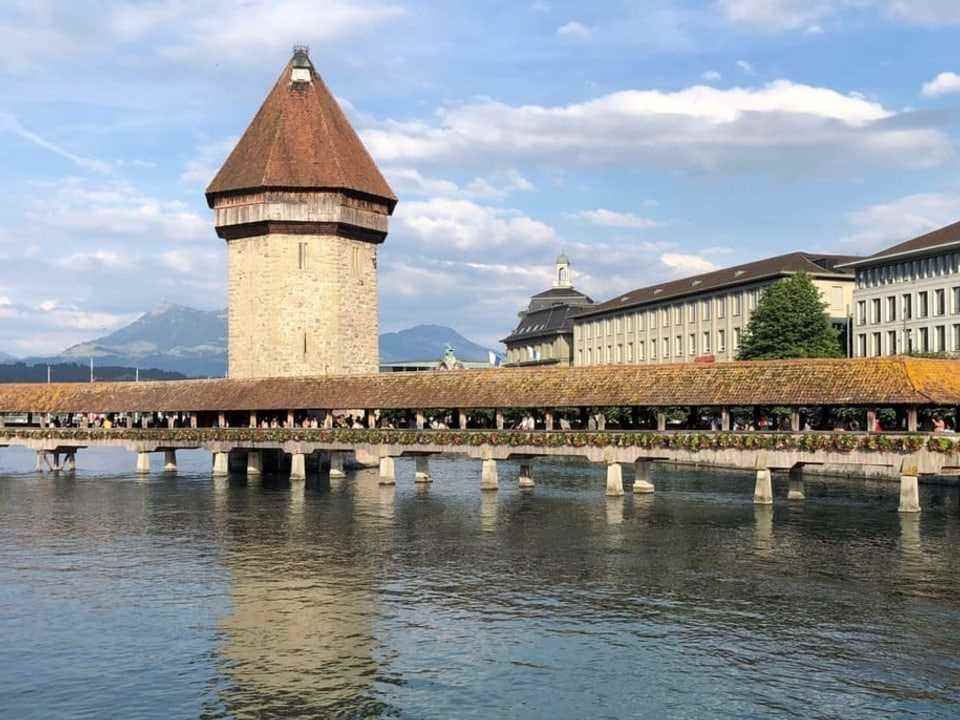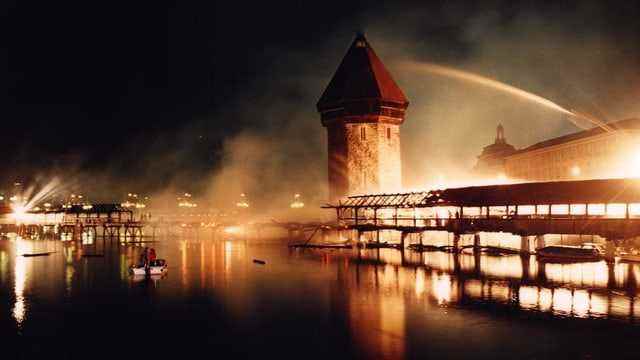contents
The Chapel Bridge with the water tower is Lucerne’s major tourist attraction. It’s lucky that it’s still standing today.
It is probably one of the most popular photo subjects for tourists traveling to Lucerne: the Chapel Bridge with the water tower in the middle of the Reuss. In 2019 – the last year before the corona pandemic – the city of Lucerne had over one million overnight stays, plus day tourists. They all probably walked across the Kapellbrücke at least once, using expressions like “beautiful” or “merveilleux”.
Legend:
Much photographed, much admired: The Chapel Bridge today.
key stone
But what’s the big tourist attraction today wasn’t very popular yesterday. This is what Valentin Groebner says. He is a historian specializing in the Middle Ages and tourism and a professor at the University of Lucerne: “Early travelers describe Lucerne as narrow, sad and deserted. The bridges are imposing from afar, but gloomy, narrow and stinking up close.”
The famous wooden bridge was built around 1360. So it is about 660 years old. With a length of 205 meters, it is the second longest covered wooden bridge in Europe.
Defense against attacks from the water
The Chapel Bridge with the water tower was part of the city fortifications. Even then, Lucerne was a self-contained city, lying on a river. The lake was threatening – because the enemy could sneak up on this path. The bridges in Lucerne were therefore part of the huge fortifications with almost 50 towers. «The water tower was one of the high-security zones of the Lucerne city administration. Important prisoners were also tortured there,” says Valentin Groebner.
The Chapel Bridge gradually became an attraction
The Lucerne landmark used to be a defensive structure. It was therefore a long way from today’s pretty model bridge for tourists from all over the world, decorated with geranium boxes. “Up until the 1880s, the Chapel Bridge was not considered beautiful. But as black, ugly, medieval furniture.” Such quotes can be read in city council minutes, says historian Valentin Groebner.
The Chapel Bridge was perceived as black, ugly, medieval furniture.
So it’s no wonder that the Kapellbrücke was supposed to be demolished, just like the Hofbrücke. The majority of the Lucerne population wanted the medieval city fortifications to be demolished. “In the 19th century, they wanted progress, like railroads and factories, and not old stuff from the Middle Ages.”
The Chapel Bridge only survived because it wasn’t a disruptive factor, explains Valentin Groebner: “It didn’t get in the way of the view of the lake and the mountain.”
Myth of the Old Bridge
It is therefore more or less coincidental that Lucerne still has one of its greatest landmarks today. And the history expert Valentin Groebner clears up another illusion: Namely, that the Chapel Bridge is really that old. The Chapel Bridge is a nice example that what people visit and admire today in the old town of Lucerne is not very old. On the contrary, Lucerne’s landmark in particular is fairly new.
A wooden structure that stands in flowing water lasts 40 – a maximum of 80 years.
The Chapel Bridge is from the Middle Ages, but very little of what is there today has survived from that time. “A wooden structure that stands in flowing water lasts 40 – a maximum of 80 years, after which it has to be replaced.” So the bridge has to be constantly repaired, and rotten beams and battens have to be replaced.
The famous wooden bridge remains a popular gem for tourists from all over the world, but also for the locals.
